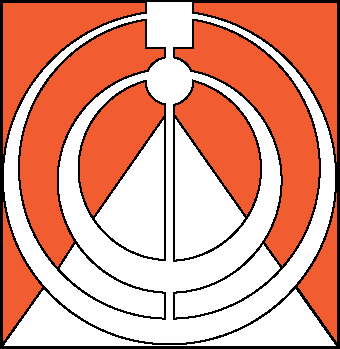Professional Learning Program Now Available Remotely
Friday, November 19, 2021
The Professional Learning Program for new Mi-STAR teachers, which once involved two days of face-to-face instruction, has fully adapted tothe realities of the pandemic. The effort has been spearheaded by Christine Geerer, a 25-year veteran teacher. She joined Mi-STAR in2015, at the beginning of its effort to develop a new middle-school science curriculum in line with the Michigan Science Standards, which are in turn based on the Next Generation Science Standards. Since then, she has piloted, taught and helped develop numerous units. Upon her retirement from teaching, Geerer became Mi-STAR's PL coordinator, working to make the Professional Learning Program shorter and more teacher friendly. Serendipitously, restrictions imposed by the pandemic have accelerated those improvements.
The effort has been spearheaded by Christine Geerer, a 25-year veteran teacher. She joined Mi-STAR in2015, at the beginning of its effort to develop a new middle-school science curriculum in line with the Michigan Science Standards, which are in turn based on the Next Generation Science Standards. Since then, she has piloted, taught and helped develop numerous units. Upon her retirement from teaching, Geerer became Mi-STAR's PL coordinator, working to make the Professional Learning Program shorter and more teacher friendly. Serendipitously, restrictions imposed by the pandemic have accelerated those improvements.
“We revamped and revised things a lot because of COVID,” said Geerer. In the process, Mi-STAR staff found that some of the changes worked so well they may keep them indefinitely.
Until spring 2020, Mi-STAR training required two days of classroom learning, the first to introduce new teachers to Mi-STAR basics, the second for more in-depth PL after they had taught their first unit. As the pandemic set in, staff knew that model needed a pivot. Instead, the new PL has replaced that in-person class time with two phases, both of which can be completed remotely.
Phase 1 begins with an asynchronous course on Canvas. As teachers work their way through a six-hour online course on their own schedule, they also take three synchronous two-hour sessions, which can be held face to face or using Zoom. “It’s only six hours, and we could use 60, but we are able to model breakout rooms, Jamboards and system modeling online,” Geerer said.
After completing Phase 1, teachers are qualified to teach Unit 6.1 and can request access to other Mi-STAR units.
Phase 2 replaces the second day of face-to-face training. Teachers complete online primers for their first two units and are encouraged to finish primers for all the units they teach. In addition, teachers spend six hours in Phase 2 Sessions on topics they select, in the format of their choice, building a toolkit of pedagogical skills. Topics may include Unit Bubble Maps, System Models, Productive Talk, Claim/Evidence/Reasoning, and Assessment. The study sessions are offered synchronously and asynchronously by Mi-STAR staff and may be led locally by a professional learning facilitator (PLF).
Phase 3, which provides ongoing PL, is largely unchanged. Teachers receive ongoing support through their PLF or Mi-STAR coach, the Mi-STAR Curriculum Helpline and Mi-STAR’s online community forums. They are also invited to attend the virtual Mi-STAR Learning Series and Assessment Series sessions that are offered at least once a month by Mi-STAR staff.
The new training process was designed to better meet the needs of teachers and school districts, now and into the future. “In the past, after teachers taught their first units, PLFs would pull them out of class for a full day,” said Geerer. “But now there are hardly any substitute teachers, so we knew that in some districts, there was no way the traditional Day 2 was ever going to happen.”
That said, educators are still welcome to use the in-person Professional Learning Program if they wish. “We wanted to remain flexible, so if PLFs want to do Phase 1 or Phase 2 in person, they can do it,” said Geerer. “We love and encourage that, but we’re providing lots of options.”
“Whenever you give people choice and flexibility, it makes them happy,” she added. “I did get feedback that this PL would be so much better if it were face to face, and I agree. But I also spoke with a teacher mom with school-age children who was practically dancing when she found it was virtual. We’re trying to give people choice in their crazy lives.”
The training protocols may be new this year, but teachers’ engagement with Mi-STAR remains unchanged. Some veteran teachers who are new to Mi-STAR still ask Geerer why they shouldn’t continue to teach “the old way.” “My best answer is that with Mi-STAR, they get their teacher joy back,” she said. “When you see kids engaged and learning and working together and excited, no matter what’s going on outside the classroom, you can close your door and find your joy.”
Those at the beginning of their careers need less convincing, Geerer noted. “I’ve been talking to brand new teachers who are over-the-moon excited about teaching this way.”
--------------------------
GET Mi-STAR NEWS BY E-MAIL!
Copyright © 2025 Mi-STAR
Mi-STAR was founded in 2015 through generous support provided by the Herbert H. and Grace A. Dow Foundation. Mi-STAR has also received substantial support from the National Science Foundation, the MiSTEM Advisory Council through the Michigan Department of Education, and Michigan Technological University.


















